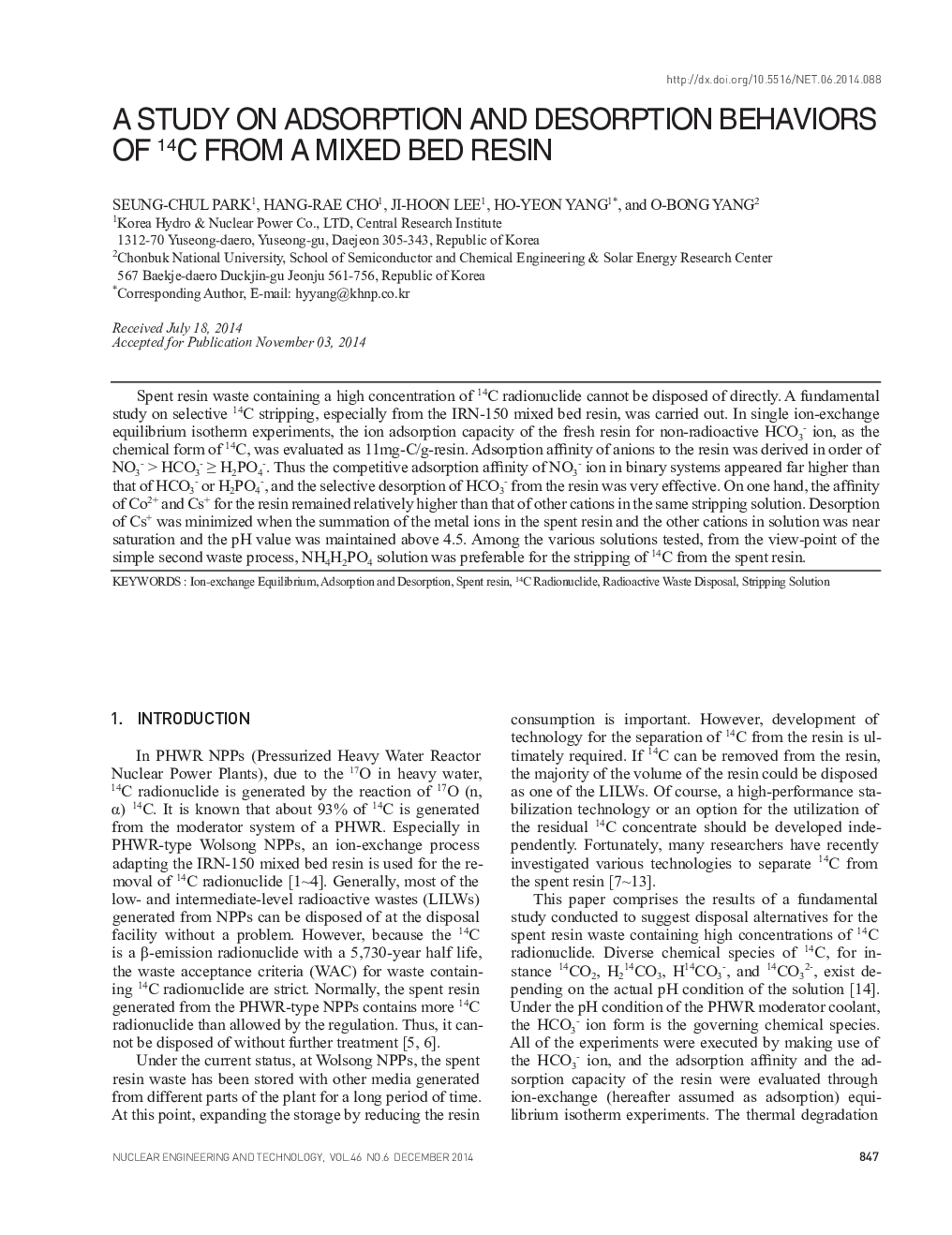| Article ID | Journal | Published Year | Pages | File Type |
|---|---|---|---|---|
| 1739936 | Nuclear Engineering and Technology | 2014 | 10 Pages |
Spent resin waste containing a high concentration of 14C radionuclide cannot be disposed of directly. A fundamental study on selective 14C stripping, especially from the IRN-150 mixed bed resin, was carried out. In single ion-exchange equilibrium isotherm experiments, the ion adsorption capacity of the fresh resin for non-radioactive HCO3− ion, as the chemical form of 14C, was evaluated as 11mg-C/g-resin. Adsorption affinity of anions to the resin was derived in order of NO3− > HCO3− ≥ H2PO4−. Thus the competitive adsorption affinity of NO3− ion in binary systems appeared far higher than that of HCO3− or H2PO4−, and the selective desorption of HCO3− from the resin was very effective. On one hand, the affinity of Co2+ and Cs+ for the resin remained relatively higher than that of other cations in the same stripping solution. Desorption of Cs+ was minimized when the summation of the metal ions in the spent resin and the other cations in solution was near saturation and the pH value was maintained above 4.5. Among the various solutions tested, from the view-point of the simple second waste process, NH4H2PO4 solution was preferable for the stripping of 14C from the spent resin.
